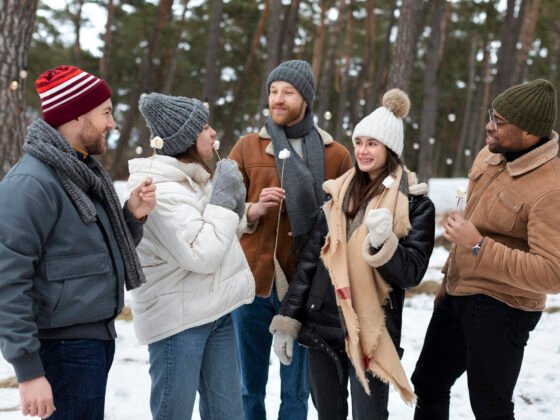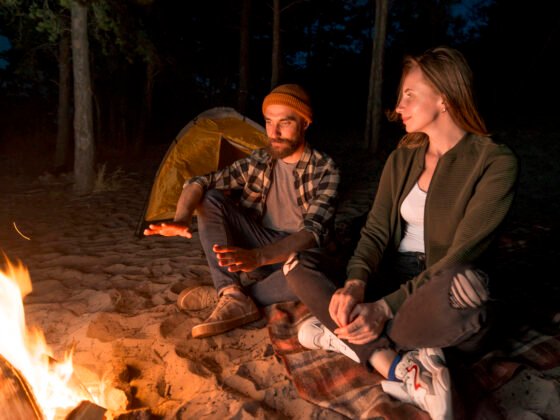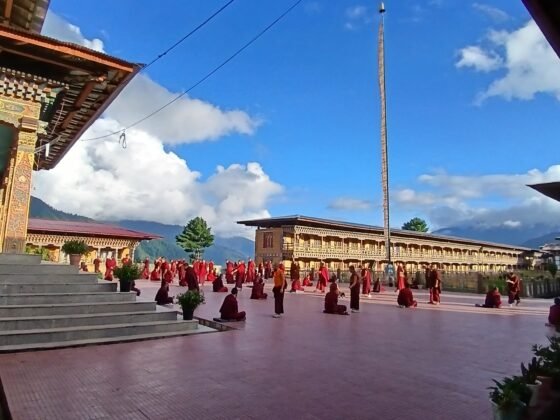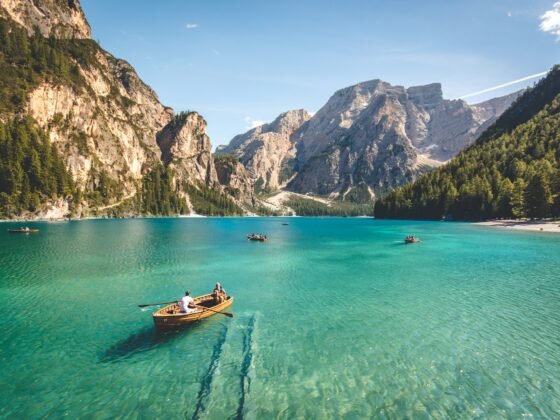Tired of boring, cookie-cutter hotel rooms? Seeking a more memorable travel experience immersed in nature? Unique accommodations like tiny homes and glamping sites offer adventurous travelers authenticity and sustainability in intimate settings away from tourist crowds.
The Rise of Alternative Accommodations
Visitors increasingly desire deeper destination connections beyond superficial tours. Unique lodging facilities prioritize ecology, creative architecture, and community over mass commercialization. Properties feel special through personalized design details, locally sourced materials, and charming hospitality distinguishing them from big box hotels.
Why Choose Alternative Accommodations?
Benefits driving adoption encompass:
- Authenticity: Quirky, small-scale operators deliver insider regional experiences and recommendations bigger corporate chains struggle to match. Stays feel specific to the locale.
- Sustainability: Tiny abodes, converted containers, and camping innovations favor smaller footprints, eco-friendly builds, renewable amenities, and promoting conservation engaging visitors.
- Novelty: Charming unconventional structures like houseboats, trains, and wine barrel rooms promise novelty beyond repetitive motel aesthetics and amenities amidst beautiful landscapes.
- Affordability: Cost savings from smaller spaces and self-catering options at unique boutique sites allow longer family vacations. Owners pass discounts from lower overheads.
- Connection with Nature: Glamping venues, wild lodges and secluded cabins bordering scenic trails facilitate escaping digital overload to reconnect with oneself and immediate surroundings renewing perspective.
Tiny Homes: Living Large in Small Spaces
Compact dwellings containing complete living necessities on environmentally small footprints attract growing interest for cost and sustainability reasons. Tiny abodes also build community with collective lifestyle events. Exact mini dimensions remain subjective but typically fall under 500 square feet embracing mantras like “less space – more freedom”. Micro-living popularity extends to vacation cabins and auxiliary dwellings on existing lots. Tiny homes proponents value:
- Minimalism: Paring down possessions to functional essentials frees up time previously spent cleaning and maintaining clutter enabling focus on more fulfilling priorities.
- Affordability: Eliminating unused rooms and spaces cuts building expenditure and long-term utility overheads improving financial flexibility. Tiny home compound projects allow sharing amenities further reducing individual owner costs.
- Sustainability: Smaller resource footprint through conscientious material selection, renewable energy integration, reduced heating/cooling needs and zonal positioning limiting land impact enables eco-friendly dwelling aligned to conservation values.
- Mobility: Tiny houses on trailer chassis unlock travel flexibility relocating to newer communities on wheels akin to fluid RVs avoiding restrictive decade-long mortgages stagnating in one place.
- Community: Developers planning entire tiny home neighborhoods cultivate connection through collaborative decision-making on shared policies, amenities, and peer learning sustaining minimalist lifestyles.
Designing Your Tiny Home Vacation
Purpose-built rental tiny homes balance novelty and comfort through:
- Location: Coastal vistas, lakeside plots, hillside cabins, or downtown pockets immerse visitors in charming communities with trails, farmer’s markets, and local attractions nearby. Careful sitting enables discovery.
- Amenities: Well-considered furnishings like convertible furniture, compel cooking gear, sleek bathrooms, concealed storage, and customized lighting pack utility and style elevating limited areas through ergonomic innovations and inviting longer stays.
- Privacy: Clustering tiny abodes appropriately on lush landscapes easily creates a private getaway ambiance with guests enjoying sunset views from private balconies without neighbors peeking in.
- Eco-Friendly Infrastructure: Solar panels, compost bins, rainwater harvesting and sustainable construction materials like recycled wood make tiny homes ideal platforms for demonstrating renewable living principles and educating visitors on preserving ecology for the next generations.
- Local Partnerships: Area gift shop shelves stocked with works from Indigenous artists, on-demand yoga sessions arranged at nearby studios and custom experiences like wine tours integrate hospitality facilitating memorable regional celebrations beyond the tiny house gates.
Glamping: Where Luxury Meets Nature
Glamping (glamorous + camping) delivers creature comforts in natural settings facilitating access to sweeping starry skies, tranquil lakesides, and sweeping mountain peaks without sacrificing cozy beds, modern kitchens, and designer decor. These upscale outdoor resorts appeal to novelty-seeking travelers wanting to reconnect with destinations conveniently.
Types of Glamping Accommodations
Unique structures strike a balance blending outdoorsy authenticity with indoor hospitality standards through curated sophistication like:
- Safari Tents: Spacious weatherproof canvas tents on raised polished wooden decks contain plush queen beds alongside stylish interiors with patterned rugs, comfy chairs, and electricity oftener overlooking savannah plains evoking exotic expeditions.
- Yurts: Circular solidly built permanent tents inspired by ancient Mongolian shelters with domed roofs offer spacious interiors containing beds, seating areas, and wood-burning stoves bringing families together against stunning backdrops from forests to vineyards.
- Treehouses: Whimsical multi-level forest abodes built around mature trees using responsibly sourced woods, ropes, and living roofs ranging from rustic to modern delight inner children seeking hidden getaways transporting imaginations to new heights while forest bathing.
- Airstreams: Retro polished iconic aluminum recreational vehicles remodeled into comfortable temporary sites provide instant mobility bringing sleek luxury to outdoor spaces with compelling histories invoking romanticism for couples chasing adventure on wheels seeking sweeping sightlines.
- Cabins: Cozy log cabin and cottage rentals channel wilderness nostalgia on lake shores or mountain ridges with picture windows framing inspiring views ready to explore right from doorsteps that city escapes cannot replicate.
Other Unique Accommodations
Beyond tiny homes and glamping, uncommon accommodation types beckon adventurous travelers including:
- Farm Stays: Lodges, cottages, and family rooms on pastoral lands let visitors immerse into agricultural communities helping with farming tasks, interacting with resident animals, and learning cultivation practices through authentic rural living charms.
- Eco-Lodges: Sustainably constructed resorts bordering reserves educate on ecological conservation practices while delivering magnificent sightlines of landscapes guests traverse on walking safaris, birding expeditions, and stargazing nights led by naturalist guides revealing insights.
- Capsule Hotels: Compact urban pods providing affordable nightly accommodation innovative micro-stays creatively designed in hip minimalist spaces encouraging communal socialization in cosmopolitan districts perfect for mobile minimalists.
- Houseboats: Floating vacation rentals docked on rivers, lakes, or intra-coastal waterways put constantly shifting gorgeous views at doorsteps alongside watersports opportunities facilitating atypical aquatic escapes perfect for seeking liberty from wanderlust.
- Cave Stays: Modernized prehistoric cave dwellings carved into hillside cliffs containing cozy rooms, chef’s tables, and sublime subterranean spas frame timeless perspectives on human habitats facilitating mystical sojourns inspiring the soul differently.
Tips for Choosing and Booking Unique Accommodations
Finding a perfect luxurious escape in Mudgee requires:
- Research: Scout aesthetic options on niche listing sites like Glamping Hub catering specifically to alternative spaces instead of just commercialized mainstream platforms displaying unique creations prioritizing personality over scale.
- Book Early: Reserve well in advance for peak seasons at specialized venues with limited room inventories that get sold quicker given one-of-a-kind exclusivity alluring travelers wanting memorable vacations prompting planning.
- Consider Access Needs: Detail any elderly, differently abled or child safety considerations requiring ground floor rooms, grab bars, or child-proofing ensuring selected operators can cater to requests suitably especially given atypical room layout possibilities.
- Double Check Amenities: Reconfirm details like catering options, experience add-ons possible and cancellation policies align with planned activities for group sizes clearly distinguishing between nicer-to-have and must-have accommodations components personalizing escapes.
- Travel Insurance: Consider supplemental policy buffers protecting trip investments covering last-minute cancellations availability changes given potential inventory fluidity volatility from smaller independent property owners possible, unlike hotel chains.
Conclusion
Unconventional accommodations like tiny homes and glamping diversify hospitality options letting guests cocoon within scenic destinations conveniently while treading lighter supporting local jobs. Purposeful amenities creatively delivered unravel novel ways of experiencing travel beyond mundane motel rooms. Plan ahead and research thoroughly when opting for such whimsical escapes promising personalized precious memories worth collecting once in a lifetime. The enriching perspectives gained leave lasting impressions.












